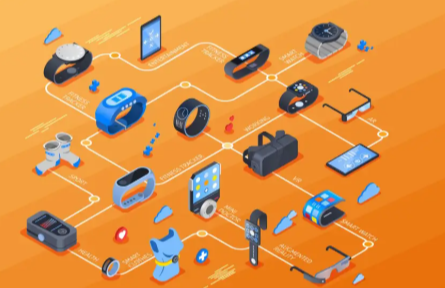The rise of smart wearables has significantly transformed fitness tracking. These devices offer a range of functionalities, from simple step counting to comprehensive health monitoring. Users can now access real-time data and personalized insights, fostering a deeper awareness of their fitness journeys. As technology continues to evolve, the implications for health management and community engagement become increasingly intriguing. What innovations lie ahead, and how will they further influence personal wellness?
The Evolution of Fitness Tracking Technology
As technology continues to advance, the evolution of fitness tracking technology has transformed the way individuals monitor their health and physical activity.
Historical milestones, such as the introduction of pedometers in the late 18th century, laid the groundwork for modern advancements. These early devices encouraged physical movement, paving the way for sophisticated wearables.
The rise of digital sensors and mobile applications revolutionized personal health management, allowing users to track metrics like heart rate, sleep patterns, and calorie intake.
Today, technological advancements have led to smart wearables that seamlessly integrate with lifestyle, promoting not just fitness, but overall well-being.
This progression empowers individuals, granting them control over their health journey, fostering a sense of freedom in their pursuit of fitness and wellness.
Read more: How Technology Is Driving Innovation in Food Production
Key Features of Smart Wearables
The advancement of fitness tracking technology has led to the emergence of smart wearables, which offer a myriad of features designed to enhance personal health monitoring. Among the most significant capabilities are heart rate tracking and activity monitoring.
Smart wearables utilize sensors to provide real-time heart rate data, allowing users to gauge their cardiovascular health and optimize workout intensity. Additionally, activity monitoring tracks various metrics, such as steps taken, calories burned, and sleep patterns, empowering individuals to take charge of their fitness journeys.
These features not only promote a more informed approach to health but also encourage users to engage in physical activity with a personalized touch. As a result, smart wearables foster a sense of autonomy in managing one’s fitness and well-being.
Benefits of Using Smart Wearables for Fitness
While many individuals strive to improve their fitness levels, the integration of smart wearables into their routines can significantly enhance the effectiveness of their efforts.
These devices offer comprehensive health monitoring, providing users with real-time data on heart rate, sleep patterns, and physical activity levels. This information empowers individuals to make informed decisions about their fitness routines, ultimately leading to better health outcomes.
Furthermore, smart wearables foster user engagement through interactive features such as goal-setting, reminders, and social sharing. By creating a sense of community and accountability, users are more likely to stay motivated and committed to achieving their fitness objectives.
Future Trends in Smart Wearable Technology
With advancements in technology accelerating at an unprecedented pace, the future of smart wearable technology in fitness tracking promises to revolutionize how individuals monitor and enhance their health.
Artificial intelligence will play a pivotal role, enabling devices to analyze user data more efficiently, predict health trends, and offer tailored recommendations. This level of user personalization empowers individuals to take control of their fitness journeys, adapting routines based on real-time feedback and personal goals.
Furthermore, the integration of biometric sensors will enhance accuracy in tracking physiological parameters, fostering a more comprehensive understanding of one’s health. As these innovations unfold, users will experience a greater sense of freedom and autonomy, allowing them to pursue wellness in a way that aligns with their unique lifestyles.
Conclusion
In contrast to traditional fitness methods, which often relied on subjective measures and self-reporting, smart wearables provide objective, real-time data that empowers users to take charge of their health. As technology continues to evolve, these devices not only enhance individual accountability but also foster a sense of community through shared goals and achievements. The juxtaposition of personalized insights against the backdrop of collective motivation heralds a new era in fitness, where informed decisions lead to healthier lifestyles.




 What Is Edge AI and How It’s Changing Industries
What Is Edge AI and How It’s Changing Industries